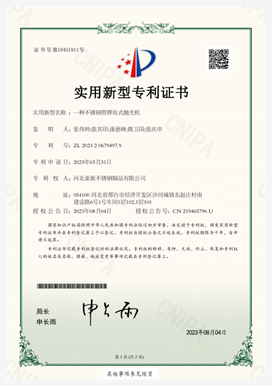Exploring the Innovative Features of Self-Propelled Reaper Technology in Modern Agriculture
The Evolution and Impact of Self-Propelled Reapers in Agriculture
Agriculture has undergone significant transformations over the centuries, particularly with the advent of mechanization. Among the most groundbreaking innovations in this sector is the self-propelled reaper, a machine that revolutionized the way crops are harvested. This article delves into the evolution of self-propelled reapers and their impact on farming practices, labor efficiency, and overall agricultural productivity.
The Historical Context
The concept of reaping dates back to ancient times when farmers used simple tools like sickles to harvest grain. The industrial revolution of the 19th century brought about mechanization, leading to the invention of the first reaping machines. However, these initial machines required animal power or manual operation, limiting their efficiency. In the early 20th century, the development of self-propelled technology marked a significant turning point. The self-propelled reaper, powered by internal combustion engines, eliminated the need for horses and manual labor, drastically changing harvesting practices.
Technological Advancements
The self-propelled reaper integrates several technological advancements that enhance its functionality. Modern models feature advanced cutting mechanisms, effectively slicing through various types of crops, from wheat to barley. Many contemporary reapers are equipped with GPS technology, allowing farmers to optimize their harvesting paths and reduce waste. The ability to map out fields and adjust operations in real-time leads to more efficient use of machinery and labor.
Furthermore, self-propelled reapers often come with additional features such as grain handling systems that can separate and store harvested crops on the go. This automation reduces the time spent transitioning between harvesting and transporting, allowing for a more streamlined farming process.
reaper self propelled

Impact on Labor and Productivity
The introduction of self-propelled reapers has had a profound impact on agricultural labor. Historically, harvest seasons required hundreds of laborers to work long hours in the fields. With automation, the need for such a large workforce has diminished. Farmers can now accomplish the same amount of work in a fraction of the time with just a few operators managing the machines. This shift has made farming a more capital-intensive industry, requiring investments in technology over labor.
As a result, productivity has increased tremendously. Farmers can cover larger areas in less time, thereby maximizing their yields and profits. The self-propelled reaper has allowed for increased specialization in farming, leading to the cultivation of more diverse crop types and higher overall production levels. This efficiency has significant implications for food security, particularly as the global population continues to grow.
Environmental Considerations
While self-propelled reapers have optimized agricultural efficiency, they also raise important environmental considerations. The extensive use of fossil fuels in these machines contributes to greenhouse gas emissions, prompting a shift towards more sustainable practices. Innovations in battery technology and biofuels are being explored to mitigate the environmental impact. Additionally, the precision farming techniques often employed alongside self-propelled reapers help in promoting more sustainable farming by minimizing pesticide and fertilizer use.
Conclusion
The self-propelled reaper stands as a testament to the power of technological innovation in agriculture. It has reshaped the way farmers operate, enhancing productivity while also presenting challenges regarding sustainability. As the agricultural landscape continues to evolve, the role of self-propelled reapers will likely expand, further integrating smart technology and environmentally friendly practices, paving the way for the future of farming. The continuous improvement of these machines embodies the relentless pursuit of efficiency and sustainability in a world that demands more from its agricultural sector.
Latest news
-
When to Upgrade Your Old Forage HarvesterNewsJun.05,2025
-
One Forage Harvester for All Your NeedsNewsJun.05,2025
-
Mastering the Grass Reaper MachineNewsJun.05,2025
-
How Small Farms Make Full Use of Wheat ReaperNewsJun.05,2025
-
Harvesting Wheat the Easy Way: Use a Mini Tractor ReaperNewsJun.05,2025
-
Growing Demand for the Mini Tractor Reaper in AsiaNewsJun.05,2025
